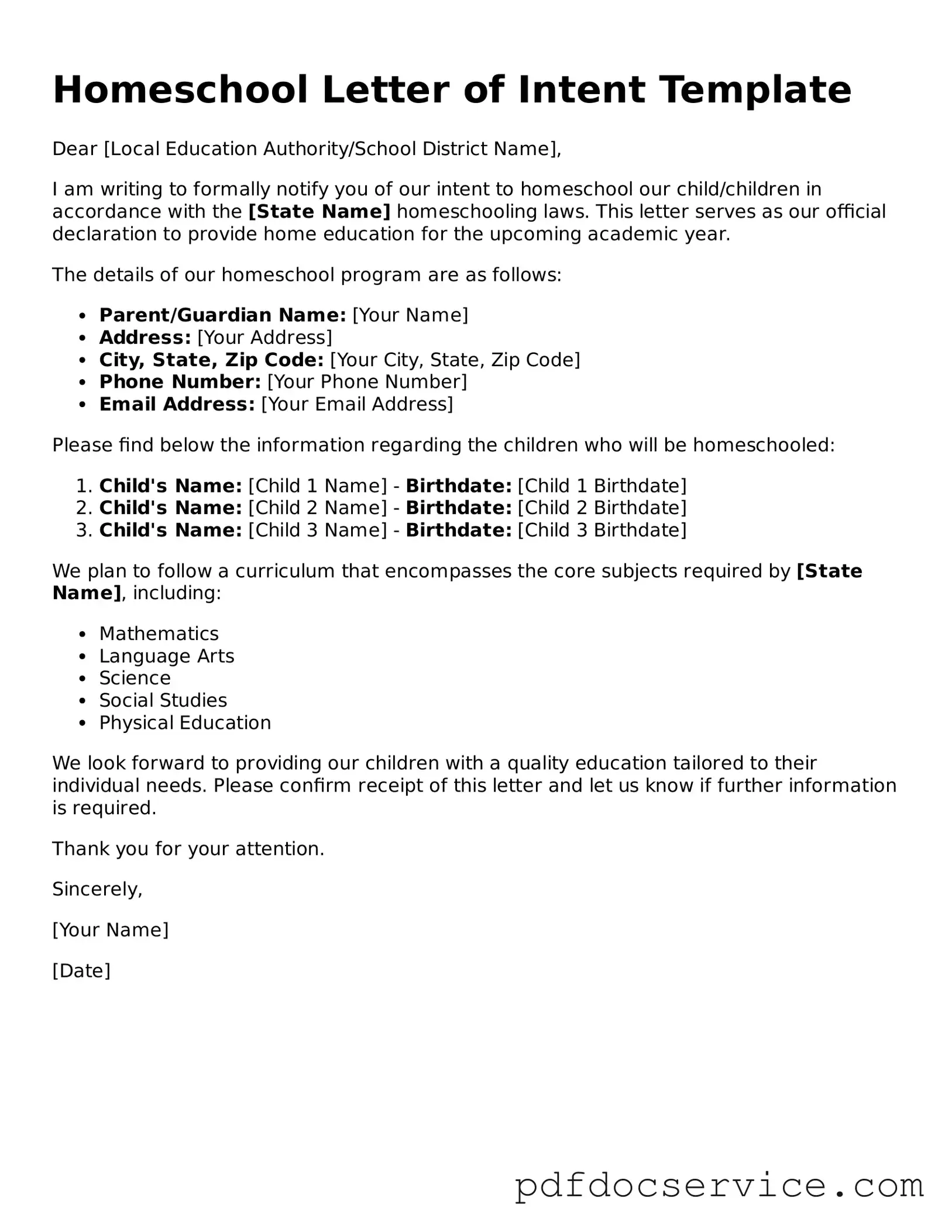What is a Homeschool Letter of Intent?
A Homeschool Letter of Intent is a formal document submitted to a local school district to notify them of a parent's intention to homeschool their child. This letter serves as an official declaration that the parent will be responsible for the child's education outside the traditional school system.
Who needs to submit a Homeschool Letter of Intent?
Parents or guardians who choose to homeschool their children are typically required to submit this letter. This requirement varies by state, so it's essential to check local regulations to determine if submission is necessary.
When should I submit the Homeschool Letter of Intent?
The timing for submitting the letter can depend on state laws. Generally, it is advisable to submit the letter before the start of the school year or as soon as you decide to homeschool. Some states may have specific deadlines, so it's crucial to be aware of these dates.
The letter usually includes the following information:
-
Parent's name and contact information
-
Child's name and age
-
The educational plan or curriculum you intend to use
-
The reason for homeschooling
Some states may require additional details, so checking local guidelines is recommended.
While there is no universally mandated format, the letter should be clear and concise. It's advisable to include a formal greeting, a brief introduction, and a closing statement. Some states may provide a template or specific requirements, so reviewing local regulations can be helpful.
Do I need to notify the school if I decide to stop homeschooling?
Yes, in many states, you are required to notify the local school district if you decide to discontinue homeschooling. This notification allows the district to update their records and ensure that your child is enrolled in a school, if applicable.
Can I change my educational plan after submitting the letter?
Yes, you can change your educational plan after submitting the Homeschool Letter of Intent. However, it’s a good practice to inform the school district of any significant changes, especially if your state requires it.
What happens if I fail to submit the Homeschool Letter of Intent?
Failing to submit the letter can lead to various consequences, including potential truancy issues. The local school district may consider your child unregistered, which could result in legal complications. Therefore, it's essential to comply with your state’s requirements.
Are there any penalties for submitting a late Homeschool Letter of Intent?
Penalties for late submission can vary by state. Some states may impose fines or require you to submit additional documentation. To avoid any penalties, it is best to adhere to the deadlines established by your local education authority.
Where can I find a sample Homeschool Letter of Intent?
Sample letters can often be found on educational websites, homeschooling organizations, or state education department websites. These resources can provide templates and examples to help guide your writing process.
